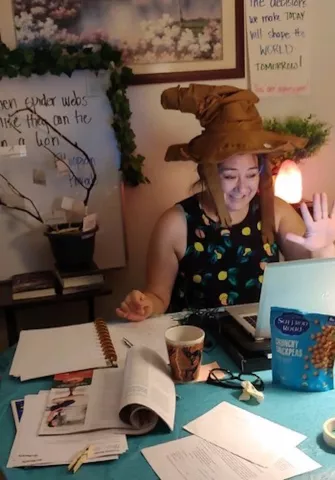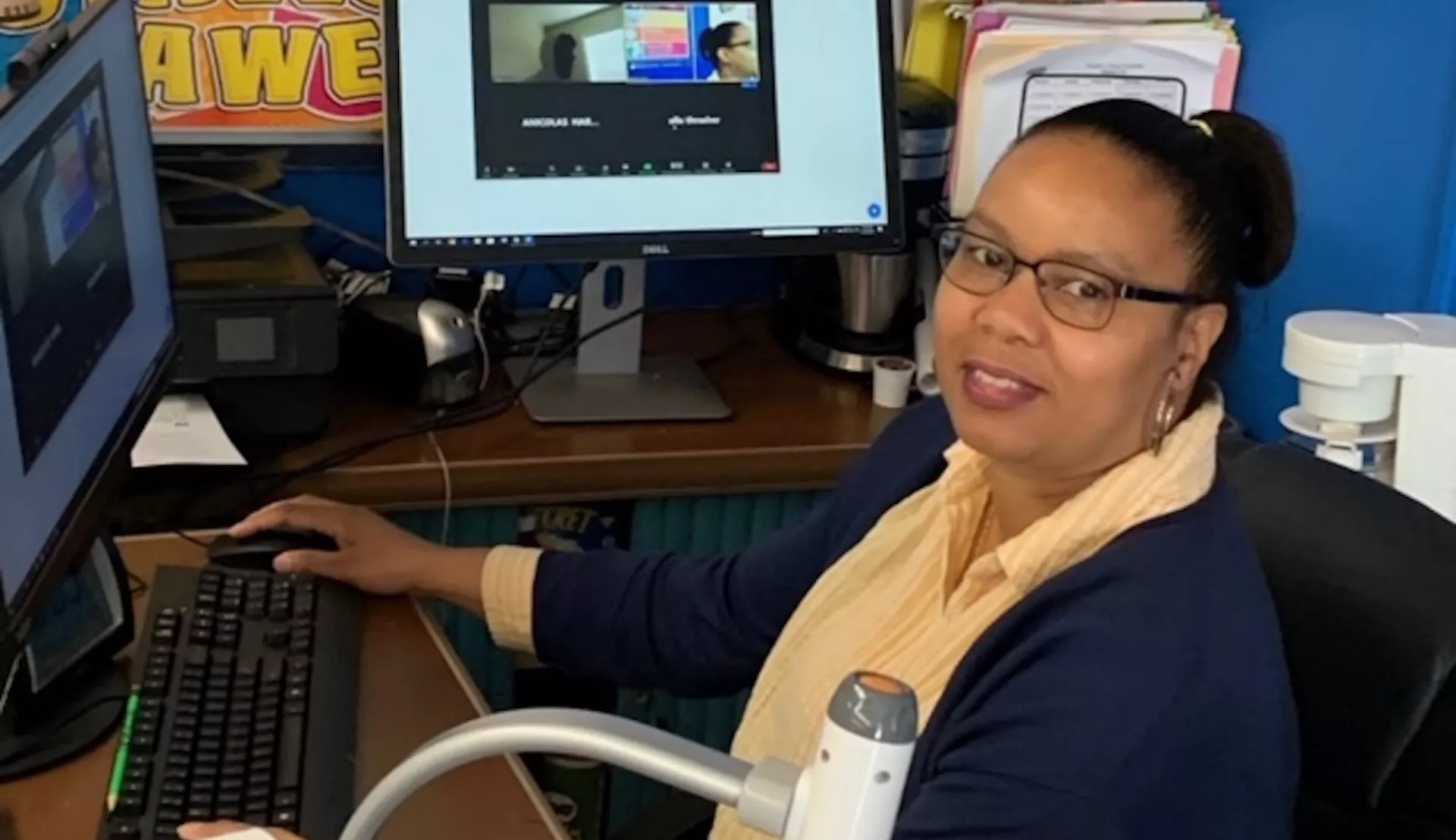Teachers know that engaging with parents—while time-consuming and, at times, unappreciated—gives parents and teachers valuable information about a student’s progress, personality, and concerns.
With many schools still conducting remote learning, communicating effectively from home has never been more critical. “Everything is amplified—[parents’] concern and anxiety, their confusion and their emotions. The layers of unknowns at this time is unsettling for us all. We all need to be treated with kid gloves—but especially caregivers,” says Lynn Rice Scozzafava, a veteran English teacher at Litchfield High School in Connecticut.
As the second half of the school year unfolds, teachers are finding new approaches to remote learning that they hope will make them better teachers today—and down the road when they return to the classroom.
“I am continually looking for approaches to keep communication flowing,” says Annette Maier, a sixthgrade teacher at Jefferson Middle School in San Gabriel, Calif. “It’s not an exact science; there’s no magic formula. But I’m excited to see what I will learn and discover.”
Many teachers are embracing new technology that makes communication easier and developing more empathy and awareness about their students and their familes. These tools, they say, are beneficial now and will be into the future.
“I think caregiver connections will be different and better,” Scozzafava says. “We are building systems as we go.”
Communicate, But Carefully
Teachers should avoid inundating caregivers with information, particularly when they are already overwhelmed, Scozzafava cautions. Teachers should consider whether the information is concise, complete and clear—or even necessary. “Make it easy for [parents] to get just the information they need,” she says.
That’s good practice, according to a new brief by the EdResearch for Recovery Project. Teachers should use various methods of reaching caregivers, the researchers say. It’s important highlight critical information and archive other important messages in a logical, user-friendly way online so parents don’t have to search through dozens of texts or tweets. They also recommend asking a colleague to review your messaging and material for its value and clarity.
Don't Add to Parents' Stress
"We have to understand that our parents have had to take responsibility for a lot more of their kids’ learning – and still adapt to what was happening in their own lives,” says Michael McKittrick, a sixth grade teacher at Ferguson ElemenElementary School in Klamath Falls, OR .
More than ever, look for signs of stress from parents such as un-deserved or uncharacteristic criticism of their student or the class or even excessive apologies, Rice Scozzafava says, and be understanding. “I don’t think I’ve written ‘No worries’ this much ever in my entire career.”
The EdResearch brief notes that educators should be conscious that although reports about students to parents are generally valuable in normal times, they can just layer on stress when parents more than ever probably know how a student is performing.

The researchers also encourage educators to look out for those spiking social and emotional issues particularly uncharacteristic changes in behavior – and pass along concerns to the right professionals.
Lakeisha Patterson, a third-grade teacher at Deepwater Elementary School in Pasadena, Texas, sets aside time each morning for students to share their thoughts and feelings and holds a “weekly reflection” time on Fridays. She repeatedly directs students and parents to her school counselor’s virtual counseling hour.
And when Maier sent out a welcome letter and link to a video created in Adobe Spark, which allows students and teachers to easily create documents and videos, and offers a number of teacher-friendly templates, she was surprised by the positive response and gratitude parents expressed. “When I asked what was particularly helpful, one said it was the part where I told them we were in this together.”
She also says her approach shifted from informing parents about a student’s performance and the expectations she has for the child to “here’s how we can do this together”—a perspective she hopes to hold on to when she returns to in-person learning.
Scozzafava says it is important to remind parents that this is new territory – for everyone. “I told them ‘I am just a first-year teacher’. This is new to all of us. They’ll be things we don’t know, but we’re going to figure it out.”
She says her traditional requirements for “respect and honesty” in the classroom have been supplemented with two others: patience and grace. “No one has the bandwidth for a lot of criticism or harshness.”
Consider the Platform For Your Conversations
Scozzafava sends surveys to parents through the district platform using Google forms to get feedback their new needs and concerns, which has been helpful as they all tackle changing roles and procedures. For instance, she developed a survey about interest in restarting individual conferences on Zoom, which she halted last spring, hoping to relieve some parents’ virtual overload, and one on re-opening schools got a 60 percent response.

For Pamela West, a geometry teacher at Jefferson Davis High School in Montgomery, AL, technology has been vital. She uses Google Phone, which gives her secure parental contact by connecting it to a line with a different phone number and transcribes voice mail messages and sends them automatically through gmail or transforms them into audio files. She also uses the Remind application application, with parents connected, so they’re aware of key dates and get updates on the class through text message.
She offers individual and group tutoring through a posted Zoom link and invites parents to a virtual classroom tour, where she shows them how students can find their assignments and grades online.
“If the parents feel comfortable maneuvering around in my virtual classroom, they will be able to better assist the student, she says. “Some parents say, ‘Math is just not my strength,’ so I invite them to the class itself—and several come.”
Patterson sends out a brief, easy-to-read and navigate weekly newsletter with a review of what’s been covered in the last week, an update on what’s coming, and any key announcements. It also offers ways for parents to connect through the school’s learning platform, email, calls, texts, and social media.
More Tech Means More Tech Support
McKittrick’s sixth-grade students, who were learning virtually as this school year began, were invited with their parents to in-person or virtual orientations about tech issues and communications.
He says parents needed fundamental guidance – and, surprisingly, so did students. “They’re good at social media, but not so much with formatting a google document or setting up an account online and remembering the password.”
Most teachers echo that observation. “I would think my high school students would be more savvy about virtual learning, but they aren’t,” says West. The technology is so critical now, but like a lot of our work with families it has required a lot more care and patience.”


